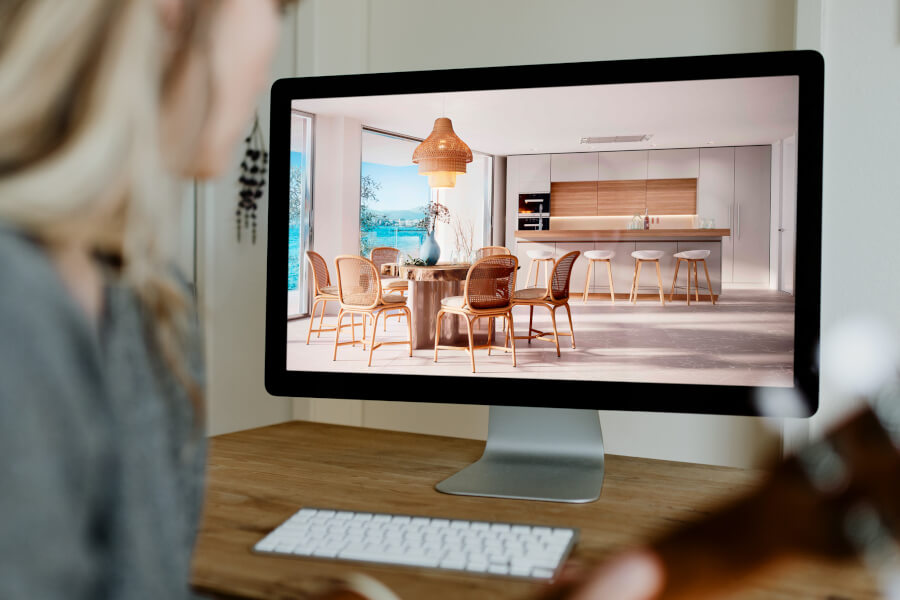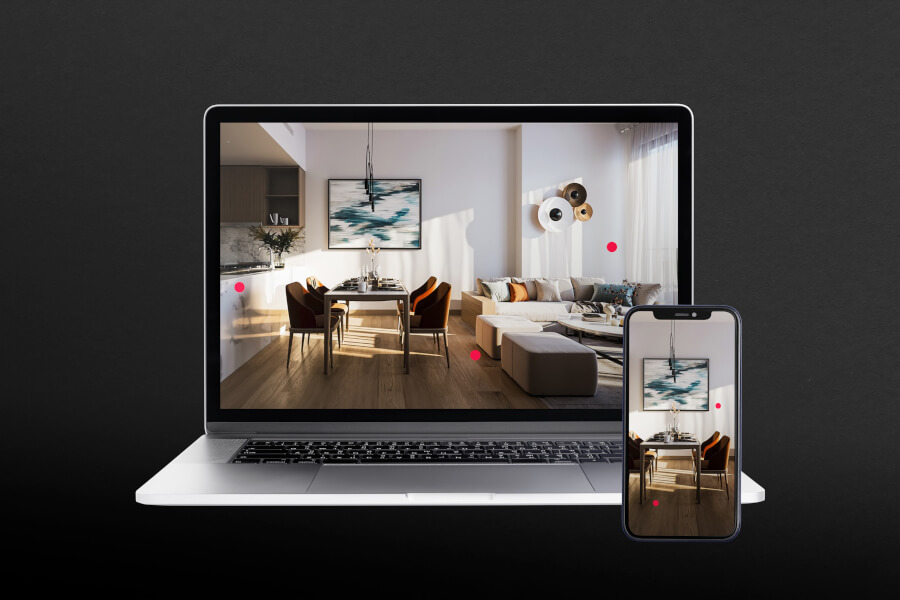Why 3D Virtual Tours & 360 Tours Are Not The Same

People keep looking for new ways of impressing viewers with visualization. However, not all the methods out there have semblance in terms of realism and clarity. As the market is constantly expanding, it is not always easy to choose which methods are better. Keep reading to learn more about how 3D virtual tours and 360 tours differ and which is better to opt for.
If we look back, it is easy to recall what we used to consider the ultimate digital visualization - a mere short video composed of images that go one after another. Luckily, technology has gone far since then. Now you can get sufficient interactive tours of the property you want to buy or rent without even leaving the house.
3D virtual yours are the best at achieving this effect. And, as the most effective approach, it is neither very cheap nor easy to create. This is precisely the reason so many approaches have been found that seem to imitate it but fail to get the same result. But is it smart to look for alternatives when you have a perfectly good solution?
So what is a 3D virtual tour?
To put it simply, a 3D tour is a high-quality 3D model of a place that a viewer can not only see but also move within and interact with. The experience a viewer has is similar to actually visiting the site, as they can see from all angles and perspectives.
Viewers can access these tours with basically any gadget, including smartphones. They then interact with a tour by clicking on different surfaces and parts of their screens: you can look around, at the floor, or at the ceiling.
Besides this high level of realism and their accessibility, 3D virtual tours are also known and loved for how immersive the experience is. While what you actually see is merely a set of CGI images, it looks like a real-life tour due to how seamless it is.

So why are 3D "digital twins" different?
Frankly speaking, there is hardly anything these two approaches have in common. While a 3D virtual tour is a complex project that involves a lot of work, "digital twins" are mere imitations that are both easy and cheap.
These imitations do not have any depth and do not allow you to look at things from different perspectives, so they can hardly be called "tours" at all. What you get is only a series of images taken with 360 cameras that are sewn together into what is called "360 3D tours," while they do not use 3D technology at all.
Why do people choose "digital twins"?
An honest answer will be that they are cheaper. This is understandable as they do not apply actual CGI or 3D technology but rather put actual footage together. However, you might end up devastated if you expect 360 tours to resemble actual tours or provide an immersive experience.
Why should you choose 3D virtual tours over alternatives?
There are plenty of reasons:
1. You can show what the property actually looks like without any measurements getting mixed up.
2. 3D tours provide sufficient life-like experiences to customers, which makes them more likely to make a purchase.
3. You can promote real estate that has not been constructed yet and make models of future developments based on their plans.
4. Virtual 3D tours are available 24/7 regardless of where you are at the moment - this can make the market significantly larger if you want to sell your house or attract investors to your commercial development.
How do you know if the 3D virtual tour is good?
Besides the things mentioned above, there are other characteristics that allow you to distinguish a good tour from a bad one. This is important if you are looking to hire a 3D company for your architectural projects or real estate business.
1. The experience must be seamless, and you should never be able to see images going one after another as a viewer.
2. It must include a "dollhouse" view that allows you to see the whole building and compare how big different items or rooms are.
3. The company you hire must be able to conduct other sorts of projects connected with 3D: floor plans, VR tours, etc.
4. It is best to work with companies that can also help you make the tour visible on various platforms.
Common questions about 3D virtual reality tours:
- available for viewers from distant areas
- available during lockdowns and social distancing restrictions
- allow both clients and realtors to save time and money on commute
- make it possible to advertise developments that are under construction
1. What is real estate visualization?
It is any type of physical or digital image that is supposed to let viewers know what an actual object looks like or what it might look like once it is finalized.
2. Why do we need 3D tours?
3D tours are an effective replacement for actual real estate tours. They can be preferable for many reasons:

3. Are 3D tours convincing?
Yes, research shows that people are more inclined to buy the property they are able to take a 3D virtual tour of. This is probably due to the fact that virtual tours can be watched in the comfort of your own home. You can also rewatch them as many times as needed and show them to other people before you make up your mind.
In conclusion, if you are choosing between high quality and low price, it is better to opt for high quality. After all, real 3D virtual tours are quite affordable without compromising the depth or seamlessness of what you see.
While "digital twin" 380 3D tours offer nothing more than a set of images sewn together without any depth, a 3D virtual tour is a complex project that involves a sequence of CGI applied so professionally that they actually resemble real-time tours.